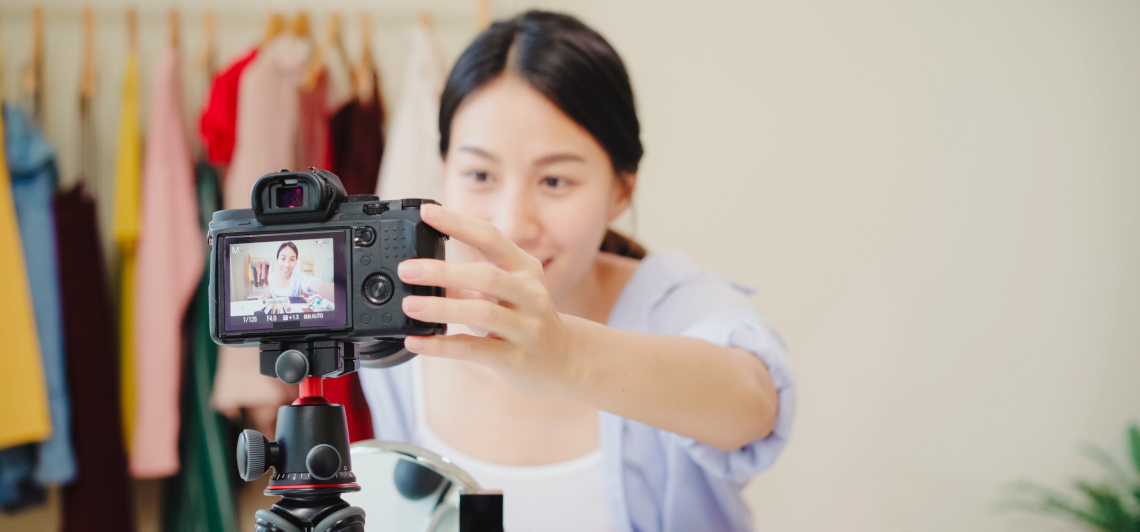2020 may have been the year when most of us worked from our kitchen table in our pajamas. Still, it was also a time when learning professionals had to conduct most of their training, workshops, seminars, or webinars via some video conferencing platform. 2021 is already here, and things don’t seem to be changing anytime soon.
While most of us may be used to the requirements of filming a piece of learning content, when it comes to live video interactions, things are a little different. Not everyone has professional lighting equipment in their kitchens – aside from food vloggers.
We all know the saying “don’t judge a book by its cover”, and I’m sure most of us agree, but when it comes to learning facilitation, we also know that it’s important for the person doing it to be, in the absence of a better word, presentable.
Here are some tips on how to look your best when facilitating a live course.
General appearance
As far as this goes, it’s pretty similar to what one would do if preparing for a live course or filming an online module. Combed hair, clean face, trimmed facial hair for men, and soft make-up for women are some of the basics.
Read more: 5 Benefits of choosing the video format for your online course
When it comes to the choice of clothes, it’s a little different. In live videos, people will only see the facilitator partially and on a small screen, so it’s important for clothing patterns not to tire the eye. It’s hard enough as it is to stay focused; if you're looking at leopard print or colorful plaid for several hours, it'll be too much. Plain, pastel colors are best, accessorized with minimal jewelry – big flashy earrings that move a lot when the instructor speaks are distracting.
Background
Just as you don’t want people focusing on your shirt pattern, you don’t want them to be confused by what is behind you either. Even if your shelves may be hosting some of the items that you are most proud of, they can be distracting, so avoid having them in the background. It’s a lot better to opt for a neutral setting like a wall with nothing on it or a single piece of art.
If the weather is nice and stable enough, you can choose to have the session outside but make sure there will be no (or minimal distractions) on your back porch. You can’t possibly schedule any squirrel visits, but if you know that there’s a chance of frequent interruptions by neighbors or passers-by, it’s best to stay inside. Some intrusions may be cute but also highly detrimental to keeping people’s attention.
Angle of the camera
This is probably one of the most common mistakes because laptop cameras are usually not well-coordinated with the height of desk chairs. And so, people don't get to see your most flattering angle.
Most often, the first attempt ends up with you filming yourself upwards, giving everyone a not so pretty view up your nose. Having the camera looking down on you is also not the best idea because it looks weird and makes it hard for the audience to connect.
The best option is to set the camera at eye level. That way, it’s easier to get and hold attention, and people will feel like you are really speaking to them. It’s what you would do in a classroom type of situation. Books are always a handy prop when you have to raise your laptop to achieve this effect.
Read more: Filming for your online course: What to know about video cameras
Lighting
This is a big issue for video. There are entire semesters dedicated to lighting and altering it to obtain all sorts of spectacular effects in film school. Lighting is a bigger deal than you realize.
A few days ago, I filmed my son reciting a poem – he was awesome. I sent the video to family members, and I got three anxious phone calls in less than ten minutes – his left eye looked like he had been in a boxing match. There was absolutely nothing wrong with his eye; he just had a "shady face” in my video. It was all because of a lamp positioned in an unfortunate place.
To avoid this when facilitating via a conferencing app, it is best to have a lamp right by your face for steady lighting. Backlights and sidelights are for professionals who know how to deal with them. It’s also important not to stand with your back to a window, as the light will most probably turn you into a silhouette on screen.
Read more: 9+1 Tips for making a video for your course
Wrapping up
Once the health crisis is over, working and teaching via video platforms will still be around since it has many advantages. Looking good is usually the first step to feeling good as well. Follow these basic guidelines, and you’ll feel more confident about your online image. That can only improve your overall performance!







